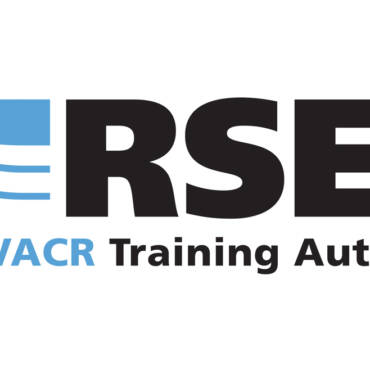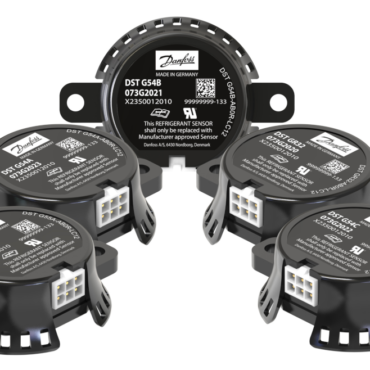✕
In less than two months, it will be that time of the year again when mornings in several countries are so cold that one thinks twice before laying their feet on the floor after waking up and, it is during such days only that one truly begins to appreciate technologies like HVAC systems, that make mornings easier for everyone, particularly in countries with severe climates. HVAC systems, have transitioned from a luxury to a necessity in the past decade, and, according to the IEA, as of 2024, ~40% of the globally generated energy gets consumed by residents and buildings for space and water heating every year.
Though modern systems have now seized the bridle, planned heating systems for keeping residents warm, like the Hypocaust system in Rome, can be dated back to as early as 80 BC. Much like the present-day radiant floor heating systems, the hypocaust system too transferred heated fluid (hot air) from a central heating source (furnace), to another surface (voids under the floor), and can be thus recognized as one of the earliest large-scale, non-documented ‘heat-exchange systems’ in use.
Market Dynamics Heating Up Post-Commercialization
Though already a part of some intelligent ancient civilizations, the true potential of heat-exchange systems remained concealed until their commercial entry into the market during the Second Industrial Revolution (1870-1914), which also led to its rapid adoption across various processes like steam power generation, chemical manufacturing, metal processing, etc.
Estimated to capture a market worth ~$16 bn by the end of 2024, presently, Heat Exchangers (HEs) have penetrated every industry that requires regulated heat flow, and their applications can be found everywhere, from humongous industrial boilers to compact residential air conditioners.
Of the various industries and processes where HEs find their application, power generation, chemical manufacturing, and HVAC are the top three according to Stratview Research, and among the top applications, HVACs are the most consumer-facing. Thus, despite being comparatively smaller in size than the other applications, it captures a significant share (~15 %) of the heat exchangers market, primarily because of its high volume.
Interestingly, there are ~30 different types of HVAC systems and sub-systems available commercially and, all of them incorporate HEs in some form. For HVAC applications, Plate Heat Exchangers (PHEs) are the most preferred type and it is well-reflected across the product portfolio of key players. ~80% of the key players in the HE market offer PHEs as the preferred solution for HVAC applications.
The Endless Heating-Cooling Cycle and its Impact on the Market
The demand for HEs comes from all three fronts i.e. industrial, commercial, and residential, and, the residential sector constitutes the largest share since almost every household needs an HVAC system. According to IEA, globally, ~40 ExaJoules (EJ) of energy was consumed in heating spaces in 2023 and only ~15% of this demand was met using heat pumps. In countries like the US, ~60% of households in warmer climates depend on traditional furnaces, and 15-25% use heat pumps. The number further lowers for colder regions where only 2-3% of the heating needs are fulfilled by heat pumps.
As the dependency on fossil fuels decreases in the coming decade, the penetration of heat pumps is expected to reach ~25% as soon as 2030 and the globally installed heat pump capacity is expected to increase from ~1400 GigaWatt (GW) in 2024, to 3000 GW in 2030. Thus, creating huge demand for heat exchangers.
The energy demand for cooling, though much lower than that of heating, is also significant. According to NASA, the average global temperature on Earth has increased by at least 1.1° Celsius (1.9° Fahrenheit) since 1880 and, the majority of this heating has taken place after 1975. Records also claim that 2023 was the hottest year in the past 175 years. Thus, with the increasing inclination towards comfort and the increasing global temperature strengthening the need for artificial cooling systems, the demand for cooling systems is also expected to increase. According to estimates, the annual air conditioner installations (commercial + residential) have seen a ~7% increment in the past 5 years from ~115 million units in 2019, to ~123 million units in 2023, almost 40% of which, came from China alone.
Thus, experiencing high demand for both heating as well as cooling, the market for HEs in HVAC systems is expected to reach $3.3 billion in 2028, according to a report from Stratview Research, and the majority of this demand is expected to emanate from North America.
Heating Just the Spaces or the Environment Too?
While HVAC systems surely bring the necessary comfort in severe climates, the carbon footprint they leave has also been a key concern among both environmentalists and OEMs. While the implementation of HEs has certainly increased in the previous decade, none of the HVAC systems have near-perfect efficiency. Sub-systems of HVAC units are often placed outdoors and are believed to generate a lot of waste heat, which is a major passive contributor to global warming.
Extensive use of artificial heating in areas with high population concentration sometimes also leads to the formation of heat islands, which again is an environmental concern.
While omitting the use of HVAC systems and HEs thus is not possible in the current global lifestyle, more focus certainly needs to be paid towards reducing the heat loss in HEs as well as a shift towards adopting modern forms of bioenergy, for heating and cooling applications needs to take place.
Whether you require installation, repair, or maintenance, our technicians will assist you with top-quality service at any time of the day or night. Take comfort in knowing your indoor air quality is the best it can be with MOE heating & cooling services Ontario's solution for heating, air conditioning, and ventilation that’s cooler than the rest.
Contact us to schedule a visit. Our qualified team of technicians, are always ready to help you and guide you for heating and cooling issues. Weather you want to replace an old furnace or install a brand new air conditioner, we are here to help you. Our main office is at Kitchener but we can service most of Ontario's cities
Source link




